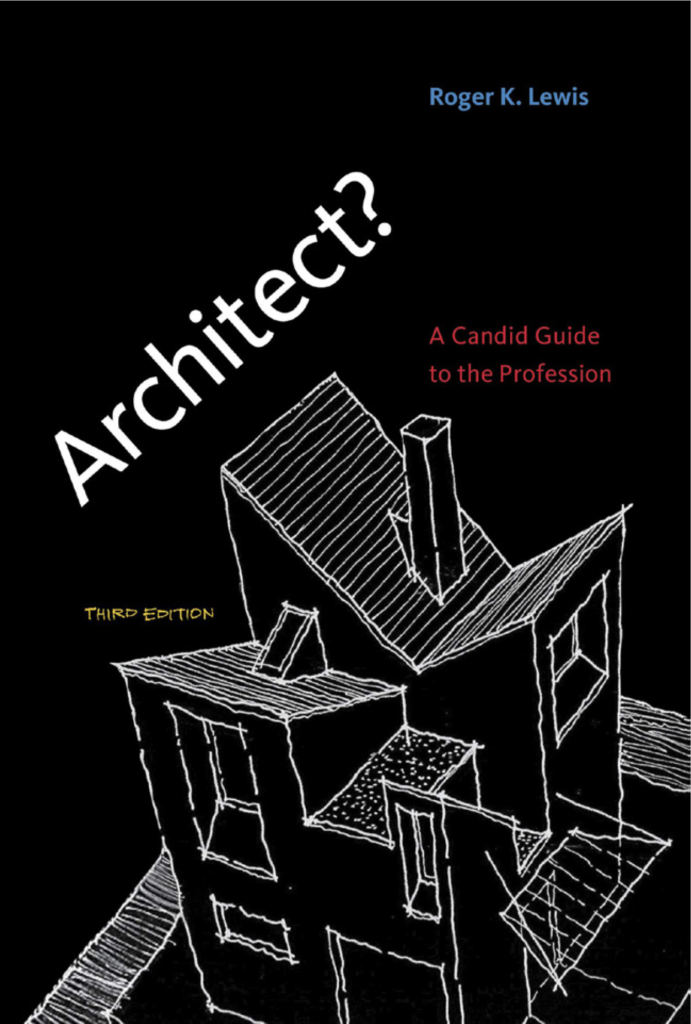The Straight Line Newsletter — Issue #14
Welcome to the 14th issue of The Straight Line, now a quarterly. Why quarterly? Because things in general – liability insurance in particular – seem to be changing more rapidly than ever, even as many of us, stuck in our makeshift home offices, watch time slowly stroll by.
In This Issue
- Retirement from Practice Program
If current circumstances have started you thinking about the long term – retirement or career change, for example – this is a good time for us to remind you that, as a licensed Ontario architect, you are eligible for participation in the Retirement from Practice Program – something that is unique to Pro-Demnity. Whether your retirement is likely to be immediate or far-off, conventional or unconventional, temporary or permanent, or not even on your radar, you are highly encouraged to read the description in this issue.
- An Introduction to Resources
At the urging of our readers, we are introducing a new recurring feature designed to help architects navigate the mystifying landscape of professional risk. In this issue, we offer a mini-review of a book that has understandably been gaining the attention of students, interns and professionals: Architect?: A Candid Guide to the Profession, by Roger K. Lewis. Candid it definitely is. Readers are invited to suggest books or other material for inclusion in future issues. Please send your ideas to editor@pd-straightline.com.
- Ontario Introduces New Construction Restrictions
“In order to reduce the spread, we are shutting down some non-essential construction like shopping malls, hotels and office towers.” Monte McNaughton, Minister of Labour, Training and Skills Development — April 16, 2021
Architects Can Retire… from practice and from insurance premiums
For some of us, the past year has felt like some form of enforced retirement, if by “retirement” we mean not having to face rush hour traffic every day, having time to walk the dog, chat with the neighbours, read a few novels – in other words, a few of the good things about retirement. Which may have gotten us thinking: What happens when I retire for real? And what about the not-so-good things?
As architects in Ontario insured by Pro-Demnity, we have a unique program that gives us one less thing to concern us. It’s called Retirement from Practice Coverage, and, according to our last members’ survey, some policyholders appear to be a little unclear (some entirely in the dark) about what it is and how it works. We hope that this issue of The Straight Line will help clear things up.

First of all, “retirement” isn’t just for older practitioners. It doesn’t mean throwing away your appointments calendar, buying a sailboat, and leaving the rest of the world behind. In this case, retirement may simply mean that you are pursuing a different path. The Coverage gives you the freedom to change your career and move on from your practice, with Pro-Demnity still at your back.
The details of the plan are not complicated. The Coverage benefits individual members of the OAA (current or former) who have surrendered their Certificate of Practice and are employed by another licence holder, have moved on to greener pastures in an unrelated field, or have simply retired in the conventional sense.
“Subject to the approval of Pro-Demnity Insurance Company, any member or former member of the OAA who meets the eligibility requirements will be insured under the program.”
Useful References for Architects – First in a Series
Architect?: A Candid Guide to the Profession, Third Edition.
Roger K. Lewis. Cambridge MA: The MIT Press, 2013
As insurance providers, we are often seen as the safe middle-ground between the perfectly normal optimism of the architect and the entirely necessary pessimism of the lawyer. Our persistent advice is: follow your design dreams, but unless you want it all to come crashing down on your head, take certain precautions.
Here is a book that lawyers, architects and insurers can all love. Lewis’s book is coolly pragmatic. In all things, if there is an upside, there is also a downside. This is best represented by the titles of his first two chapters: 1, “Why Be an Architect?” (19 pp.) and 2, “Why Not to Be an Architect” (20 pp.). The book is not intended to drum up enrolment for architecture schools, but to explain to anyone considering an architectural career what they are getting themselves into. It is also a great read for practising architects who want to refresh their grip on reality.

As an example of harsh professional reality, Chapter 2 includes a section on “Legal and Financial Risks.” Lewis explains the utter necessity of having professional liability insurance, due to the ever-increasing expectations of clients. Whether the claims are legitimate, frivolous, or somewhere in between, the financial and emotional toll of fighting a claim can be considerable. He further points out the paradox that simply by having liability insurance, architects become attractive targets for lawsuits. This section is fittingly followed by a the chapter’s final section, entitled “Disillusionment.”
One refreshing aspect of the book is that nothing is off the table. Lewis discusses ethics, legalities, and technologies, alongside personality characteristics (architects, clients, consultants and others), human foibles and professional failings.
Lewis’s overall message is summed up in the book’s final encouraging words: All things considered, “no matter who you are, where you come from, or what you look like, if you want to be an architect and have the talent, nothing today stands in your way.”
BREAKING NEWS
Changes to Allowable Construction Activities
The following has been adapted and greatly abbreviated from a blog created by Rob Kennaley of Kennaley Construction Law, and appears here with their generous permission. You are encouraged to access the full text online here.
Prior to April 17, 2021, s.43 of the O. Reg 82/20 provided that all construction activities or projects and related services were allowed to proceed in Stage 1 areas of Shutdown due to COVID-19. As of April 17, all of Ontario is in Shutdown and s.43 has been significantly amended, with the result that construction activities in the Province will be limited once again.
Generally, and very briefly, the following construction activities are still permitted:
- “residential construction activities or projects and related services,” however construction on hotels would appear not to be included within the scope of “residential”;
- “landscaping services,” by virtue of s.15 of the Schedule, however this is probably restricted to landscape maintenance, and not “hard” landscape construction;
- “maintenance, repair and property management services related to the safety, security, sanitation and operation of institutional, commercial, industrial and residential properties and buildings”;
- virtually all site services work necessary to prepare a site for development, by virtue of s.43;
- construction funded (or partially funded) by the Federal or Ontario Government, by an agency of those governments or by a municipality;
- affordable housing, or construction intended to provide shelter or supports for vulnerable persons, provided that it is funded or partially funded by specified persons, a registered charity or a non-profit corporation; and
- any construction work required to close a site where construction has been suspended.
More specifically, and again very briefly, with regard to non-residential construction, work may proceed where it relates to:
- health care or long-term care, or spaces that “could be repurposed for health care space,” (although it is unclear what these sectors include and what construction might meet the repurposing test);
- provincial infrastructure – including transit, transportation, resource, energy and justice sectors;
- new capacity in the “supply or resources”, schools, colleges, universities, specified child care centres; electricity or natural gas;
- maintenance and operations of petrochemical plants and refineries;
- “industrial” construction necessary for the production, maintenance or enhancement of PPE and specific medical devices “directly related to” combatting COVID, (note that non industrial construction of PPE or such devices is most likely prohibited unless otherwise allowed by s.43);
- production, processing, manufacturing or distribution of food, beverages or agricultural products; and 7) additional capacity in the operation and delivery of IT or for certain categories of businesses.
Kennaley suggests that in contemplating any construction project, it is not enough that the construction be at or for a business that is itself allowed to operate during the lockdown – unless the work is otherwise specifically allowed by s.15, 35 or 43.
Last year, the Province set up a Stop the Spread Business Information Line, at 1 (888) 444-3659. That line remains available as a resource to (hopefully) address any questions you might have in any particular circumstance. Refer to Pro-Demnity’s COVID-19 Bulletins, in particular Bulletin No. 10 which addresses construction related considerations.
Rob Kennaley can be reached at: rjk@kennaley.ca. The firm’s website is: www.kennaley.ca.
The Straight Line is a newsletter for architects and others interested in the profession. It is published by Pro-Demnity Insurance Company to provide a forum for discussion of a broad range of issues affecting architects and their professional liability insurance.
Publisher: Pro-Demnity Insurance Company
Editor: Gordon S. Grice
Design: Finesilver Design + Communications
Address: The Straight Line c/o Pro-Demnity Insurance Company 200 Yorkland Boulevard, Suite 1200 Toronto, ON M2J 5C1
Contact: editor@pd-straightline.com
Pro-Demnity Insurance Company is a wholly owned subsidiary of the Ontario Association of Architects. Together with its predecessor the OAA Indemnity Plan, it has provided professional liability insurance to Ontario architects since 1987.
Questions related to the professional liability insurance program for Ontario architects may be directed to Pro-Demnity Insurance Company. Contact information for the various aspects of the program can be found on the Pro-Demnity website: www.prodemnity.com
Pro-Demnity Insurance Company makes no representation or warranty of any kind regarding the contents. The material presented does not establish, report or create the standard of care for Ontario architects. The information is by necessity generalized and an abridged account of the matters described. It should in no way be construed as legal or insurance advice and should not be relied on as such. Readers are cautioned to refer specific questions to their own lawyer or professional advisors. Letters appearing in the publication may be edited.
Efforts have been made to assure accuracy of any referenced material at time of publication; however, no reliance may be placed on such references. Readers must carry out their own due diligence.
This publication should not be reproduced in whole or in part in any form or by any means without written permission of Pro-Demnity Insurance Company. Please contact the publisher for permission: publisher@pd-straightline.com

